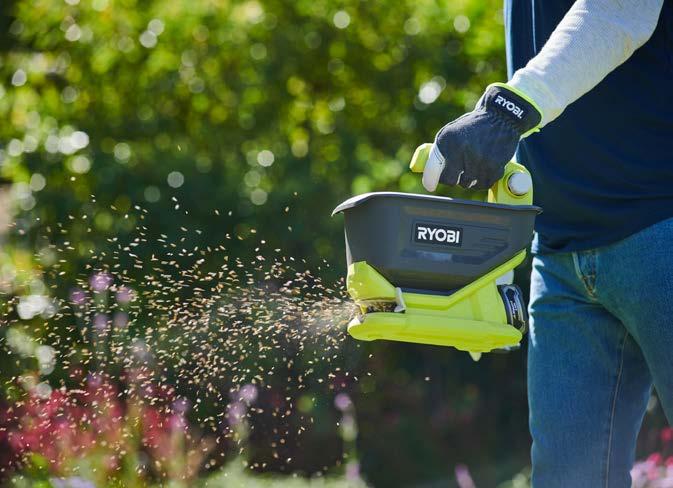
16 minute read
Leigh Price, managing director
TILE MAINTENANCE ADVICE BY LEIGH PRICE, MANAGING DIRECTOR OF REAL STONE AND TILE
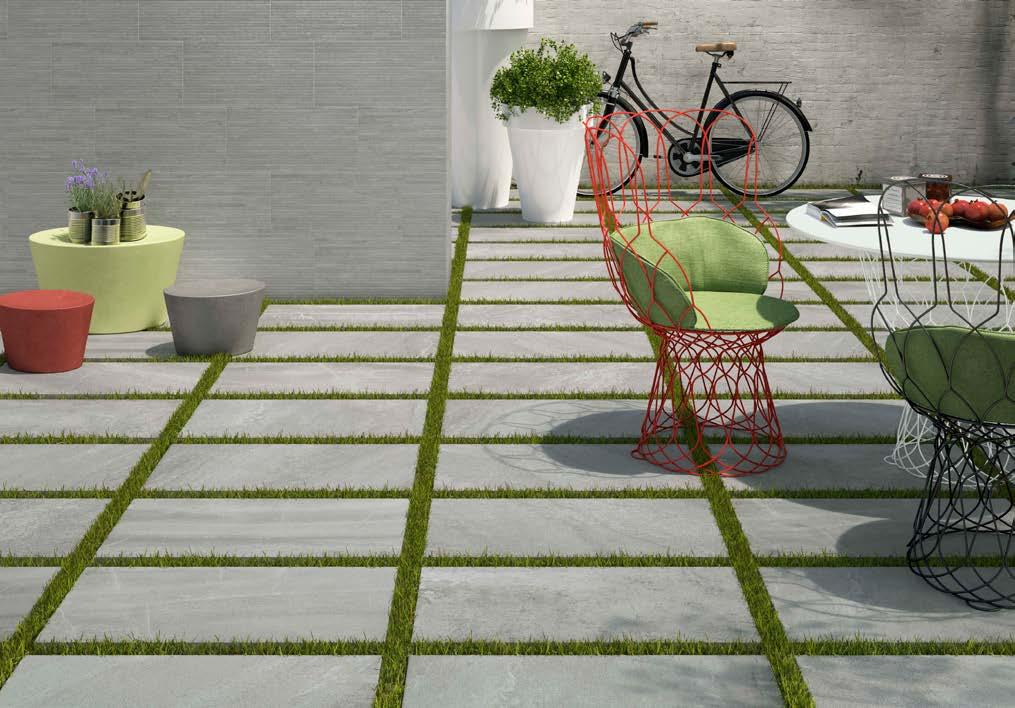
Leigh Price, managing director of Real Stone and Tile gives an expert insight into the cleaning and maintenance of flooring.
With tiles in any environment, cleaning and ongoing maintenance to them is paramount to ensure you keep a fresh appearance to the flooring and allow the home owner to prolong the life of their investment.
Identification
The key consideration before any cleaning or maintenance is the identification of the surface type which is crucial to ensuring that the correct treatment is received. Whether the tiles are ceramic, natural stone, porcelain or slate etc the cleaning and maintenance needs to be slightly adapted to suit. For example, limestone alone varies greatly in porosity dependent on age, shape and size, therefore the absorbency of any natural stone surface will need to be established. This can be tested simply by placing a teaspoon of water on a clean, completely dry tile and timing how long the water takes to be absorbed. If the water is absorbed into the tile within the five minutes, the level of porosity is high. An absorbency time within fifteen minutes indicates a medium porosity and water taking within one hour or longer to be absorbed shows a low level of porosity.
Sealing
When considering the amount of traffic passing over the flooring, it is necessary that the area is protected using a suitable sealant to reduce the risk of any damage and to also help towards the ease of maintenance. However, before a sealing product can be used it is vital that the surface is free from any dirt or grime and is completely dry. Failure to correctly prepare the flooring can result in the effectiveness of the sealant being compromised.
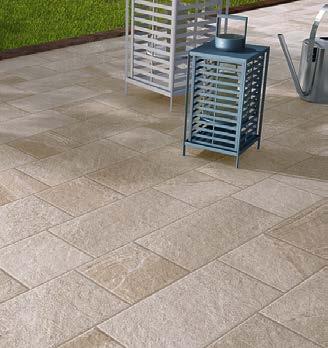
The variety of sealants on the market is large, whether you want to leave a glossy finish, matte finish or enhance the colour of the flooring

there are products to suit, whichever you choose it is imperative to make sure that the tiles are correctly preserved with the right application.
The type of sealant and the amount of this used is all dependent on the surface type that you are protecting. The tiles level of porosity can help to establish how many coats of sealant need to be applied to ensure that a suitable defence is being provided. A low level of porosity would typically require 1 to 2 coats of sealer, medium porosity requiring 2 to 3 coats and finally a high level of porosity would need 3 to 4 coats of sealer.
In most cases, tiles would be sealed in two stages; however both stages are also able to be carried out alone if suitable for the material of the tile. The first stage is to protect the surface by using an impregnating sealant; the purpose of this is to fill the little pores in the tile which then reduces the level absorbency. Following on from this a surface sealer can then be used to act as an additional seal that can reduce the risk of staining by preventing the surface from being penetrated.
Cleaning
A floor seal doesn’t last forever and that’s when intense cleaning is required to prepare the floor for initial and further protection. Sweeping over the floor with a brush is a simple yet effective way to remove the main bulk of surface dirt, but specialist products would be required to remove more stubborn blemishes or marks. There are a large range of products available on the market to tackle a range of problems such as mould and mildew, lime based stains and grease; it is recommended that specialist advice is sought to ensure that the product is suitable for the surface.
The moisture absorbing nature of grout means that it is subjective to the collection of dirt particles causing discolouration if not cared for properly. However, the maintenance and cleaning of this can be eased when selecting which tiles are going to be used. Selecting a tile design can be very exciting but it also helps to think practically, and it’s important to remember that practical doesn’t always mean bland or unattractive. Large format tiles are a great way to cover a larger area whilst minimising the amount of grout needed. In addition, if a dark shade of grout is used this will show less staining and help to ensure a fresh, clean look to the flooring.

Stain Removal
It is likely that the floor is going to be victim to some form of spillage or stain. Damage including minor discolouration can still be caused if a liquid is left in place for long enough, despite a sealant being in place. Most fluid contaminations, if tackled quickly enough can be simply removed by wiping over the floor with a damp cloth. However, should this not suffice, Fullers Earth is a great product to deal with those tougher stains; after sponging up the stain allow the product to sit for around 30 minutes to enable absorption into the powder. Any surfaces that have been treated with Fullers Earth may need to be re-sealed.
Renovation
As with many things, signs of wear will start to show the more something is used or exposed to traffic. It is important to remember that sealed floors in any environment will require periodic maintenance and complete renovation over time. If the floor is starting to accumulate grime and stains alongside a lack of shine to the finish, this indicates that the surface needs to be renovated. These signs signify that the seal on the surface is wearing, therefore the absorbency is increasing and with that comes a higher risk of damage.
It’s highly likely that the flooring seal will not wear evenly, this makes it all the more important that the flooring is intensively cleaned to remove any remaining seal before a new one is applied. As mentioned, it’s good practice to seek advice on which product is best suited to the material to determine the type of sealant remover that is used.
Aftercare and Everyday Maintenance
Once a surface is newly laid or renovated it’s worthwhile to allow the protection of the surface to last for as long as possible before it is due for renovation again. The effectiveness of the seal can be reduced with the repeated use of regular floor cleaning products. To prolong the life of a protective seal, specialist aftercare cleaner should be used and strong bleach cleaners avoided. The use of protective mats under heavy furniture and floor mats in high footfall areas such as doorways can help to enhance the longevity of the flooring seal, in turn keeping your floor protected for longer.
Overall, if given the correct care and attention tiles can have a long lifetime and remain to be a great finish for any environment.

For more information on Real Stone & Tile, visit: www.realstoneandtile.co.uk or call 0161 485 1373.
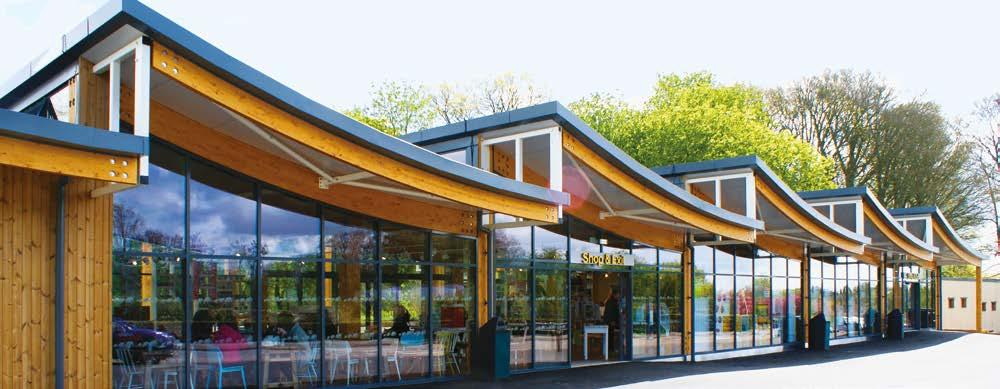
EXCITING TIMES FOR INDUSTRY LEADER

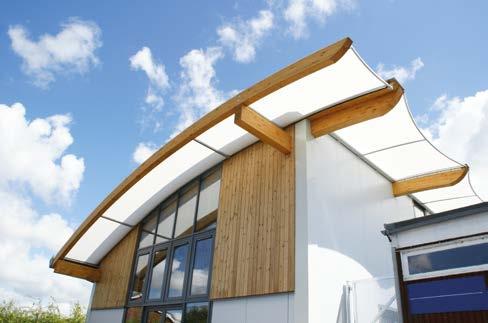
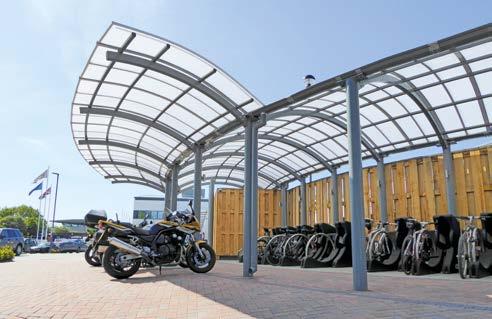
Over 50 years ago, a company in Arundel, West Sussex, produced a groundbreaking range of polytunnels for commercial horticulture. Continually growing, they are now the UK industry leaders in the design, manufacture and installation of inspired structures, ranging from beautifully curved timber canopies in nationwide visitor attractions to industrial steel constructions covering football pitches, ambulance bays and hospitals. But they are not stopping there.
Fordingbridge also produce preengineered building frameworks from their custom developed Arundel factory. Garden centres, exhibition buildings for Zoo’s, coffee shops, even A&E wards. Their team of structural designers work solidly to ensure every calculation is on the nose, ready for their craftsmen, also in-house, to produce the framework components. Their approach to work, allows for the rapid installation of impressive steel and timber structures that grace hospitals, leisure facilities and schools up and down the country. “We undertake all of the pre-fabrication here, leaving minimal disruption to the client onsite,” explains Stephen Toone, Managing Director of Fordingbridge. “We prefab all of our structural components offsite, meaning that once the groundworks are completed, the building envelope can be erected in a small number of weeks rather than months. It is great to see the reaction from the client or contractor when we get to work; our process is seriously quick.”

And the buildings themselves are far from the norm either. Working to a goal of banning boring buildings Fordingbridge excel in structural timber as well as steel, creating curves and lines that flow through any landscape. “We have invested in the technology and the people to make buildings interesting again,” Stephen says. “If you imagine a standard brick building. You could create interesting shapes, but it can be expensive, has a large carbon impact and takes time. Then you need to make it fit with the landscape. Now imagine having your foundation laid and seeing beautiful sustainably sourced timber curves begin to grace the landscape in a matter of days. Our approach allows that to happen.”



With such a wide commercial portfolio, Fordingbridge have a number of processes in place that promote results through relationships. Working closely either directly with the client, or via an architect or contractor, they ensure a full understanding from the outset allowing for a minimum of disruption and measured results. “We undertake installations in live hospitals, schools and Zoos, so prefab is a longstanding prerequisite rather than just a buzz word for us,” Stephen confirms. “We can’t ask a hospital to completely close for a few months while we do our bit. It is a case of do as much as we can offsite, arrive and install. Our position is enviable. We have our own structural drawing team, our own engineers and factory, our own logistics and our own installers. All these factors make our process and products exceptional.”
The company’s portfolio is an impressive one and chances that either yourself, family or your colleagues have interacted with a Fordingbridge product is high. Installing hundreds of steel and timber canopies, walkways and shelters throughout schools, hospitals and theme parks, their experience in this field alone is broad enough. Combine this with the inspired commercial building back catalogue and the offering becomes even more enticing.
What is next for Fordingbridge? Self-build, and the approach they have taken to it is an interesting one. Working either to an architects drawing, or using their own design team, they draw and manufacture the structurally calculated building components in their factory. They then deliver and completely install the building as they would regularly, or can now deliver the components in kit form for a third party to erect. “We understand that a lot of self-builders want to do just that. They want to get their hands dirty, stand back and see the fruits of their labours. But equally they don’t want to dig a hole and spend months getting out of it,” Stephen jokes. “Our skills with structure put all the details for our element of the

building in black and white. If the client wants light exposed timber beams and columns throughout, we can make that happen. If they want a steel framed atrium, polyester powder coated in RAL4003 covering a connecting swimming pool, no problem. Once we have taken a design order, we can provide full cost certainty so the client knows exactly what to expect. The steps which lead to this are all about communication, and we are strong believers in that. Our company is proud to have so much repeat business and so many referrals, and we don’t get that by keeping our clients guessing or not delivering.”
From a covered walkway or canopy for your next commercial project, to an inspired building for your discerning client, Fordingbridge are certainly the company to consider.

Q&A WITH THE UK’S LEADING SUPPLIER OF LANDSCAPE & GARDEN PLANTS

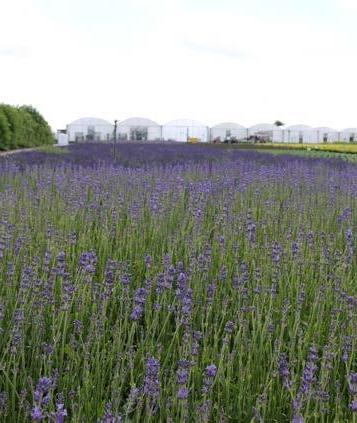
With the end of 2019 vastly approaching what have you noticed in the trends this year regarding orders and popular products?
A combination of tried & tested functional old favourites and inspirational high profile lines aimed at the retail market.
What would say have been your most popular product of this year and would you have said it would be this product at the start of the year?
For sheer numbers the obvious answer is native broadleaf hedging – Hawthorn, Blackthorn, Field Maple and Holly etc in a variety of 1 and 2 year sizes. Lavenders remain an inspirational winner – our supply topping 110,000 this year. Texture, form and colour continues to inspire and our sale of Herbaceous Perennials is becoming dominant without our portfolio – 20 years ago demand was practically zero!
Have you undertaken any large case studies this year you would like to draw attention to?
The Event Complex Aberdeen
We recently teamed up with p1 Contractors Ltd to supply over £150,000 worth of plants for a multimillion-pound Scottish conference/ exhibition centre and largest new entertainment complex in Europe. Replacing the Aberdeen Exhibition & Conference Centre (AECC), The Event Complex Aberdeen (TECA) is a £330 million development that opened in August 2019; it includes a new arena, conference halls, a multipurpose space, hotels and more.
The new arena will host acts such as Rod Stewart, Michael Buble, Lewis Capaldi and Elton John in the coming months; it is set to attract an additional 4.5 million visitors bringing £113m of extra spend to the Scottish economy.
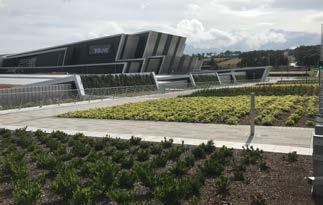
Our supply included nearly 40,000 shrubs, 170 three-metre-wide hedera screens, over 30,000 bare-root transplants and more than 400 trees. Linlithgow-based p1 was responsible for all the soft landscaping on the project, soiling all areas around the complex along with seeding works and tree, shrub and woodland planting around the site.
Ronnie Blair Contracts Manager for the project on behalf of p1 Contractors Ltd, added: “Having a company such as Johnsons of Whixley working with us on such a large-scale project has been very reassuring, Iain has taken the time to come up to Scotland and walk the site offering information on the planting to help me with the contract. With the opening of the new complex on the horizon, I am excited about the prospect of returning in a few years to see what it looks like with a bit of maturity something which should be in keeping with the ambitious company we are.”

ThThee UUK’K’ss LeaLeaddiinngg SuSupppplilierer ofof LaLannddscascappee && GGaardrdenen PlaPlanntsts foforr aapppproroaachchiinngg 110000 yeayearsrs


WhWhyy JJoohhnnsosonns?s? OnOnee stopstop shshopop ‘‘tuturnrnkeykey solusolutitionon -- RapiRapidd responresponsese iinn recogrecognniititionon ofof youyourr titimmescalesescales -- ConConsisistenstentt stockstock atat ththee ririgghhtt pripricece -- EExpertixpertisese -- FlexiFlexibibililityty -- SelfSelf mmananagageded trantransportsport -- RenRenownowneded ggrowersrowers -- EExtenxtensisiveve susupplypply chchaiainn -- OuOurr serviservicece solvessolves youyourr problemproblems.s. WhWhoo wewe woworkrk wiwithth:: ComCommmerciercialal LanLanddscapers,scapers, LanLanddscapescape ArchArchiitects,tects, LanLanddscapescape GGardardeneners,ers, EEstates,states, HHotelotel ChChaiainns,s, GGardardenen DDesiesiggnners,ers, SchSchoolsools anandd UUnniiversiversitities,es, TreeTree susurgrgeoneons,s, FaciFacililititieses MMananagagememenentt ComCompanpaniieses anandd GGardardenen CenCentres.tres.


SSoommee ofof oouurr pprevirevioouuss pprorojjectsects iinnclucludde:e: HHS1S1 ForthForth RoadRoad BBririddgge,e, BBrookerooke ParkPark NNII,, NNatiationonalal ArboretuArboretumm,, ComCommmononwealthwealth GGamames,es, RoyalRoyal Parks,Parks, MMagagggiie’e’ss CenCentre,tre, ColiColinnddaleale GGardardenens,s, BordBorderer RaiRailways,lways, HHelielixx ProjProject,ect, TadTadpolepole GGardardenen ViVillagllage,e, DarwiDarwinn escapes,escapes, CamCambribriddgge,e, BuBudde,e, NNorfolk.orfolk.
Foliage absorbs the suns energy making the area cooler
Slots to allow trees & shrubs to be anchored in any location
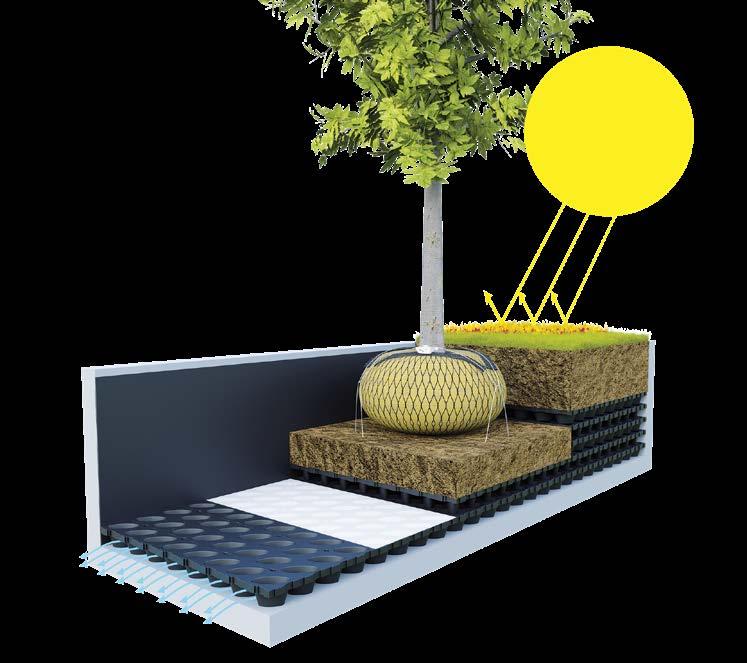
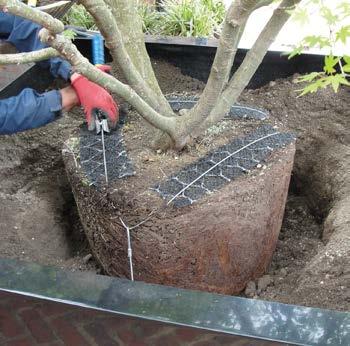
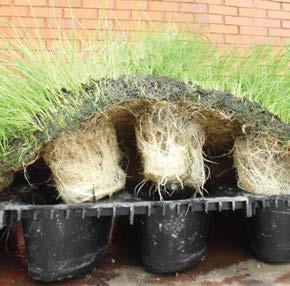
Allows air to flow and surface water to drain underneath cells
Suitable for green roofs and all planting situations
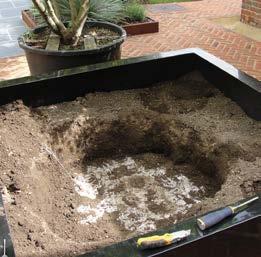
Promotes strong root development with suitable geotextile
MAXIMISE THE BENEFITS OF YOUR GREEN ROOF OR URBAN PLANTING WITH THE NEW PLATIPUS G-ROOF ® SYSTEM
With urban areas continuing to grow around the world, the need to utilise the green spaces available is at an all-time high. The use of green roofs and urban planters have become one of the established solutions for maximising these green spaces and enjoying the ecological benefits they provide.
Plants and trees improve their local microclimate by absorbing energy through a process known as evapotranspiration which will make the area cooler. This bio layer will also act as thermal insulation for green roofs during the colder months keeping the interior warmer.
Any roof garden or urban planting will improve the biodiversity of the environment by attracting birds, butterflies, insects and bees. Due to green roofs foliage refracting and reflecting sound, it will improve the sound insulation of the building. Foliage will also enhance the surrounding air quality by increasing the oxygen levels and reducing the nitrogen dioxide and particulate matter. The biggest benefit is what it can do for the people using it. The ability to find a peaceful spot, to enjoy the biodiversity and to relax, will improve the effectiveness and efficiency of those using the space. Platipus has designed G-ROOF ® , a modular structural and drainage system using recyclable plastics, to support the development of these urban areas.
G-ROOF is a lightweight and easy to assemble system that works ideally with intensive roof gardens and planting areas where the green space can be maximised to include trees and larger shrubs. These trees can be anchored directly to the G-ROOF using standard Platipus Tree Anchoring Systems and the incredible vertical load capacity of the G-ROOF supports the additional weight associated with intensive gardens. Green roofs and urban planting areas are often exposed to the elements so the ability to retain water and assist with stormwater management is important. G-ROOF assists with the first interception of storm rain because it has large integrated cups for water retention. The G-ROOF’s ability to retain stormwater will ensure that your green roof or urban planting becomes a successful source control mechanism by alleviating water pressure on congested urban environments. Aside from stormwater management, where water is scarce, the ability for G-ROOF to provide valuable water storage will ensure that the planted vegetation has better chance of thriving. Where your design requires planting areas to be built up, G-ROOF can be constructed quickly by stacking and rotating cells 90° to give you a solution that retains water, allows drainage and provides support at the same time. G-ROOF System is a new and exciting innovation that will add simplicity and value to any future roof garden or urban planting project.




